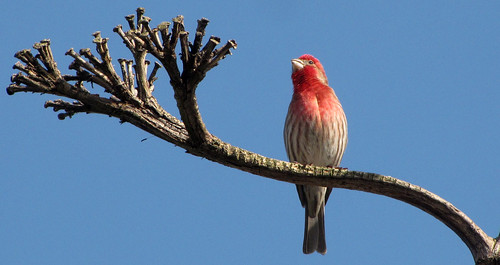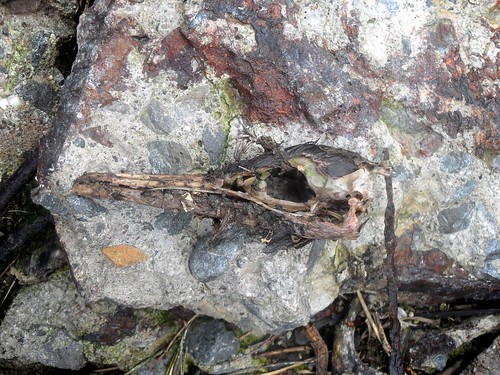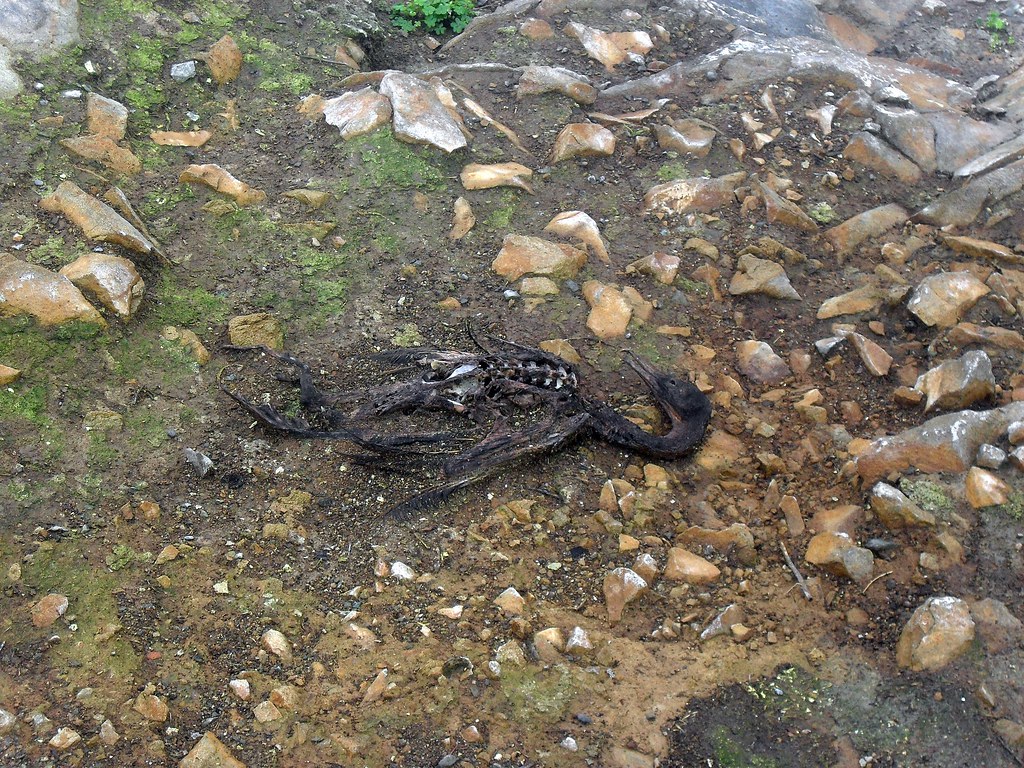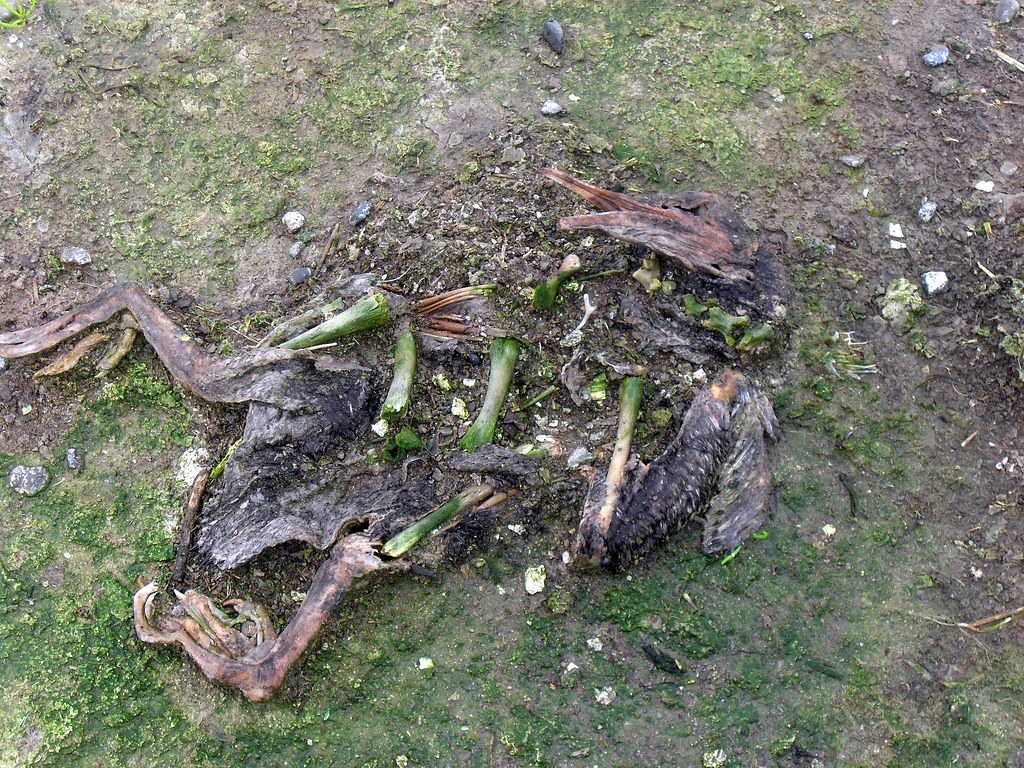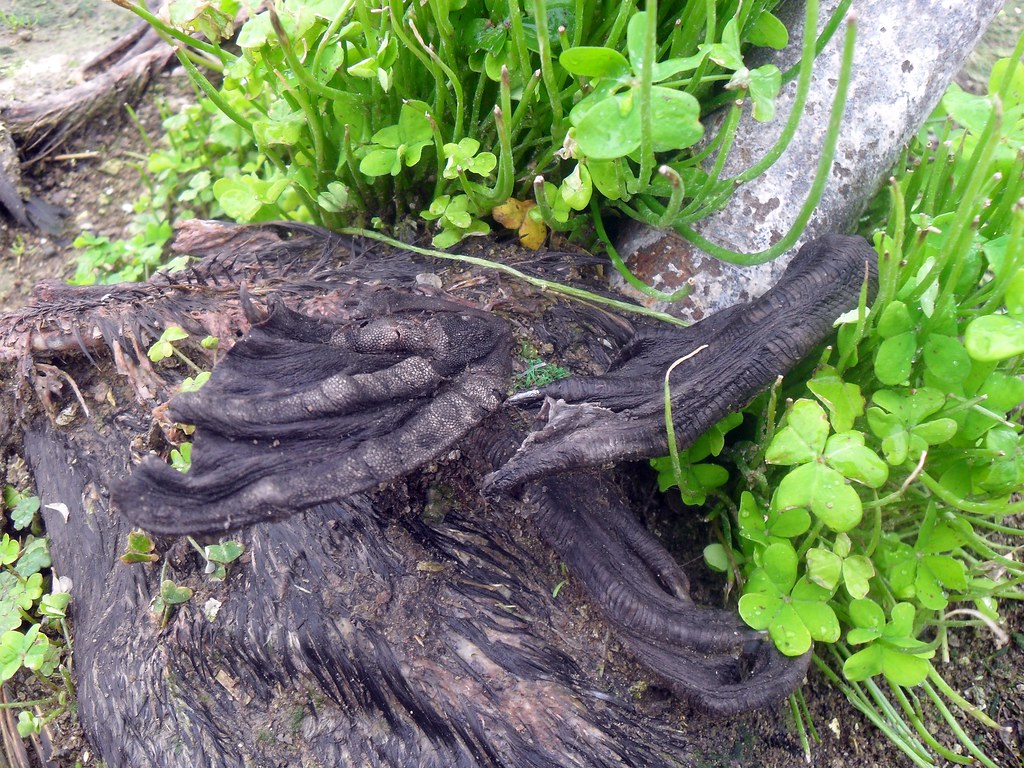Sunday, February 28, 2010
 Our peregrine pair: Birders love them. Birds do not.
Our peregrine pair: Birders love them. Birds do not.
7:08 PM | Posted by
Sweep Commander |
Edit Post
As the pair soared high over the recreation yard today, they alarmed the gulls roosting below and soon the sky was full of angry birds. The sound of their collective threat and unease vocalizations was deafening.
After perhaps fifteen minutes of falcon soaring and gull ambivalence, one falcon disappeared from view and the other descended, hovering in strong winds perhaps 40 feet above me.
Then I made our very first observation of unsolicited mobbing behavior by the gulls towards the falcons. With no clear provocation, three gulls began to pursue and attack the falcon. One managed to bite the falcon's tail several times and each time the falcon issued a vocalization that I would describe as halfway between a screech and a groan.
The falcon then evaded its three pursuers and attacked a soaring gull. Contact was made but the peregrine failed to grab or otherwise harm its target. WEGUs seem a little big for peregrine food so its possible that the attack was an expression of anger at the mob attack.
It gives us cause to wonder. In prior posts, we've speculated and even boldly predicted that the gulls would eventually drive the falcons away. We've seen the gulls handle many a red tailed hawk in this manner and when the gulls mob a raptor during nesting season, they are relentless. As nesting season comes near, will the gulls continue to lose patience with the pair of peregrines that would take Alcatraz as their own?
We'll keep you apprised.
On another note, the common raven pair was again spotted moving nesting materials to its preferred tree on the north side. The presence of the falcons there may not be enough to change their plans after all.
That's it for today.
Saturday, February 27, 2010
 Fem peregrine takes a pigeon
Fem peregrine takes a pigeon
11:09 AM | Posted by
Sweep Commander |
Edit Post
Some very fine folks from the Golden Gate Raptor Observatory visited the island on Thursday, investigating reports of the peregrine falcon pair in our midst.
Their excursion began fruitfully enough, as they spotted the female (which I had wrongly taken to be the male) perched in her familiar cypress tree just across from the main entrance to the cellhouse basement. The male, however, was nowhere to be found.
BourbonHawk and I were able to shirk customer service duties for a bit to show the visiting birders each of the island's falcon haunts. Sadly, after forcing our guests to hike high and low around the entire island, dragging their heavy birding equipment behind them, the male failed to appear. Then, as we returned to the female falcon's perch, the male landed on the water tower, issuing forth vocalizations that our visiting birders called wailing.
The female watched the male without apparent interest.
After getting a look at the male, the experts concluded that it is a juvenile, perhaps a peale's falcon, putting Alcatraz well outside its normal breeding range. The female is a typical anatum.
Yes, you read that correctly. She's a cradle robbing cougar with a taste for the exotic! It's unknown whether or not the male will be able to breed with her, or whether the extent of their cooperation is limited to hunting and defense against the island's resident gulls and ravens.
As the clock turned to four, it was time for us to pack up and leave Alcatraz for the day. On the way down the hill, we noticed that the female had joined the male on the water tower. BourbonHawk took a picture:
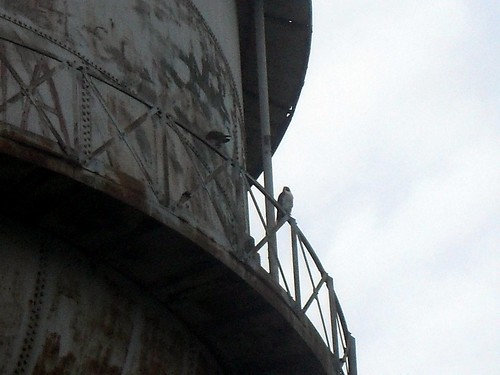

Fifteen minutes later, as we boarded the boat, a small mob of gulls chased the falcon pair over the boat's boarding ramp. The female had a recently dispatched pigeon in tow. I'm not envying the island's pigeons, pigeon guillemots and starlings right now.
Here's a shot from the MAGANRORD archives.
Odds, ends:
We observed a great blue heron on Alcatraz. It had been months since we'd seen one.
Undeterred by the presence of the peregrines, the ravens defiantly carried nesting materials to their familiar tree on the north side of the island. The falcons prefer the north side and that may be why the ravens now spend considerably less time there.
Monday, February 22, 2010
 Falcon News and Lucky the WEGU!
Falcon News and Lucky the WEGU!
10:08 PM | Posted by
Sweep Commander |
Edit Post
'WEGU' is bird nerd speak for western gull.
Here's your Alactraz birding update:
- For a number of weeks now, an injured juvenile western gull has been living on the west side of the island, hobbling about near the old prison incinerator. When I first observed the individual, I thought he or she would surely starve or be killed by an angry adult, tired of the endless begging for food. Somehow the bird has endured and because of this very good fortune displayed the enfeebled gull, I've decided to name it 'Lucky'.
- Fellow western gulls respond to Lucky in the same way that the typical city dweller responds to a homeless person aggressively trying to hock copies of The Street Spirit. As he/she whines hoarsely and desperately pecks at their lower mandibles in an attempt to force them to regurgitate food, the mature birds shift their gaze, looking to the side or at the soil as they go about their business or walk fleetly away. They avoid looking Lucky in the eye as they evade or ignore.
- Curiously, the other western gulls almost never show an interest in harming Lucky. Once, I did see a gull try to deter Lucky's begging with violence, but another adult gull intervened, apparently to help the poor WEGU. I don't know whether the gull who intervened to aid Lucky was of any relation to him or her, but on the whole it struck me as a strange behavior for any western gull to display. These are not compassionate creatures.
- Several pairs of mallards have arrived on the island and from our observations over the last several days, these are some very sleepy ducks.
- The male falcon could be seen darting, diving and weaving inside a hostile mob of western gulls at around 4:30 this afternoon. Eventually it squirmed away and perched on the lighthouse.
- The female falcon has adopted a fairly predictable daily routine. More mornings than not, she perches on the water tower's railings facing west. When afternoon comes around, she moves to the other side and faces east. This may indicate a preference to face away from the sun, perhaps because direct sunlight interferes with her ability to perceive her surroundings or assess her prey.

Click on the image for a larger size
- After speaking with a number of former Alcatraz bird biologists, I've learned that falcons have been spotted on the island with regularity going back to the early 2000s, and perhaps earlier. As far as I can tell, however, it was assumed that any sighting was of an individual belonging to a known and established local pair, such as the pair that nest on the bay bridge. This year is unique because we've observed that we do indeed have a pair and we've seen them with enough brute regularity to surmise that they spend the vast majority of their time on Alcatraz.

Click on the image for a larger size
- I saw the pair flying together recently in high wind, performing yet more joint aerial acrobatics, spinning circles around each other, dive bombing one another and just doing a whole lot of what I'm assuming was falcon flirting. When one falcon disappeared, the other soared over a pair of gulls and aggressively fell towards one with talons extended. Gulls are not the fools of the sky, however, and this one simply executed an evasive falling maneuver of its own. The falcon then proceeded to approach the other gull in the same way with the same result.
- An adult western gull is probably a bit big for a peregrine to make a serious attempt to predate it. Rather, the falcon was probably feeling a bit feisty from all the courtship and hey, you've gotta direct that energy somewhere.
- Two western gulls aggressively chased a brown pelican over Alcatraz today, perhaps in an attempt to force it to give up its catch of fish. This behavior is called kleptoparasitism.
- Mourning doves and American crows have been spotted on the island in the last week.
That's it for today.
Saturday, February 20, 2010
 Feeding Frenzy!
Feeding Frenzy!
12:34 PM | Posted by
Sweep Commander |
Edit Post
The west side of the island seems to have two levels of bird activity: dead and absolutely teeming. Of late, it's been rare to observe more than a few dozen birds fishing off the west side of the island, but a bit earlier in the year we saw some very epic feeding frenzies.
In the above video from the first of February, we see innumerable western gulls, western grebes, brandt's and double-crested cormorants competing for their share of a fish run. Brown pelicans could be seen plunge diving among them.
click on the image for a larger size
The next day, there were still countless birds fishing between Alcatraz and the Golden Gate Bridge. Nearly all were cormorants.
click on the image for a larger size
The ways of the bay are mysterious indeed.
Wednesday, February 17, 2010
 Bird Census: House Finch
Bird Census: House Finch
7:56 PM | Posted by
Sweep Commander |
Edit Post
Dislikes: How mean birds lay their eggs in our nests. How when we notice and destroy their eggs, the mean birds come back and ruin our nests. Tiny bugs that bite. Bacteria.
Undeterred by the sounds of a low flying plane, an Alcatraz house finch declares its love for you.
Monday, February 15, 2010
 A MAGANRORD Valentine
A MAGANRORD Valentine
9:19 PM | Posted by
BourbonHawk |
Edit Post
I know it's a day late, but we came upon our ravens being ridiculously adorable on the way down the hill after work. Enjoy!
 Happy Valentines Day from the Birds of MAGANRORD!
Happy Valentines Day from the Birds of MAGANRORD!
8:43 PM | Posted by
Sweep Commander |
Edit Post
One day belated, admittedly.
This pair of gulls marked the romantic occasion by giving us our first glimpse of gull copulation this year. Oh, the romance!
Better videos of gull mating to come.
We also observed the falcon pair roosting together on the water tower, the first time we've seen them share a perch since they arrived in mid-November. When I pointed this out to Park Ranger John Cantwell, he smiled and said "Of course they're sitting together. It's Valentine's Day, after all!"
Saturday, February 13, 2010
 Welcome To Hell: A Brief Primer On WEGU Social Reality
Welcome To Hell: A Brief Primer On WEGU Social Reality
9:03 PM | Posted by
Sweep Commander |
Edit Post
Throughout the year, Maganrord will be reporting to you on the western gull's way of life and certain themes will emerge. The most salient of these will be casual violence.
Two weeks ago, we brought you this post which included video of a female gull soliciting a male for mating, positioning herself with her back to him and issuing randy vocalizations. Rather than obliging his partner, or gently indicating to her that it was not yet that time of year, he bit her neck.
In the months to come, we'll be giving an account of the dreary social realities that obtain in our gull colony and it will make anything our peregrines have ever done seem unbrutal and positively civilized. Gulls fight one another as a first recourse and they kill and eat each other's young without reflection.
To whet your appetite, here are two videos of recent gull fights on Alcatraz.
Two weeks ago, we brought you this post which included video of a female gull soliciting a male for mating, positioning herself with her back to him and issuing randy vocalizations. Rather than obliging his partner, or gently indicating to her that it was not yet that time of year, he bit her neck.
In the months to come, we'll be giving an account of the dreary social realities that obtain in our gull colony and it will make anything our peregrines have ever done seem unbrutal and positively civilized. Gulls fight one another as a first recourse and they kill and eat each other's young without reflection.
To whet your appetite, here are two videos of recent gull fights on Alcatraz.
The purpose of this fight wasn't at all clear to me. Do they even need a reason?
This one was a little easier to understand. While the source of the strife was mysterious, it was very clear that these two individuals had ticked one another off. The gull on the left proceeded to dominate his foe on the right.
Wednesday, February 10, 2010
 Tomb of the Cormorants!
Tomb of the Cormorants!
12:24 PM | Posted by
BourbonHawk |
Edit Post
Warning: This post contains graphic, though not gory, images of dead birds.
During the adventure upon which we discovered the falcon with her kill, we also explored the remnants of the cormorant colony. For our readers who aren't aware, by 2008, Brandt's Cormorants were the most populous nesting bird on Alcatraz, with 1700 nesting pairs reported in 2007, and 1500 in 2008. Then last year, in 2009, they began washing up dead by the hundreds around the bay and by the end of the nesting season, not a single pair bred on the island.
While the lack of nesting was pretty disturbing to us bird nerds out there on the rock, the full on carnage we found in the colony area was surely a result of the successful nesting colonies of years prior. Life is brutal, and bird life is certainly no exception. So put on your favorite gothy-metal album (I recommend some Fields of the Nephilim) and ponder the very nature of your existence as we present the horrors that were found in the......TOMB OF THE CORMORANTS!
Saturday, February 6, 2010
 Where to begin?
Where to begin?
11:43 AM | Posted by
Sweep Commander |
Edit Post
In the bedlam that leads up to bird nesting season on Alcatraz, sometimes things change so quickly that one can scarcely find the time to describe and document it for such a fine and clever readership as yourself.
With that said, here is the mother of all wrap-up posts. I hope you aren't averse to bullet points.
- OMG: TWO PEREGRINE FALCONS
We had been toying with the theory that our falcon sightings represented two individuals and not one, especially in light of just how easy the falcon was to observe, and how difficult the individual was to size and sex. One day he would seem crow sized. The next day she would appear to be as large as one of our very large ravens.
Well, I confirmed it. While observing one in a cypress tree across from the entrance to the basement, I maneuvered myself into a position to simultaneously observe the power plant. In the tree I observed this:
and on the power plant, I observed this:Not a great photo, I know, but more than adequate for my purposes.
We have a pair! Later, I saw them dancing and darting around each other in a fit of aerial acrobatics that I can only imagine represents some kind of courtship behavior. I reported all of this to our wildlife biologist and now the hope is that they will attempt to nest here.
If they do stay, they may prefer to nest on an isolated cliff deep in the areas closed to protect birds during nesting season. If they do, we may have a hard time documenting it.
- The common ravens now reside at the southern tip of the island, just off the dock. This may be due to the just mentioned falcon pair which has established itself in the trees on the northern side, which the ravens once called home.
- Some brandt's cormorants now roost on the west side of the island.
 We hope this represents an early show of strength for the brandt's cormorant colony, which saw tremendous success before it disappeared entirely in 2009. Prior to the last few days, the overwhelming majority of cormorants seen fishing west of the island were double-crested.
We hope this represents an early show of strength for the brandt's cormorant colony, which saw tremendous success before it disappeared entirely in 2009. Prior to the last few days, the overwhelming majority of cormorants seen fishing west of the island were double-crested.
- Quite surprisingly, human beings aren't the only organisms on Alcatraz to catch Falcon Fever this winter. As our falcons have been diving at triple digit speeds and decapitating murres and pigeons as though head-having itself was going out of style, the island's other winged residents have been taking notes. Here are a few of Alcatraz's newest, most eager and heretofore most unlikely predatory birds, perching at great heights, waiting for an unfortunate pigeon guillemot to fly below and become a juicy snack:

The unhinged European starling, ready to attack, fiending for fresh guillemot blood.
The common ravens may have lost their favorite tree to falcon invaders, but they remain philosophical, as they have learned a profitable hunting technique from their newest enemy.


The white crowned sparrow knows you don't take its prowess as a killer seriously. In fact, that's just what it's counting on.
Stay tuned to MAGANRORD: the only bird blog with a body count
Wednesday, February 3, 2010
 MAGANRORD BIRD CENSUS: Double-Crested Cormorant
MAGANRORD BIRD CENSUS: Double-Crested Cormorant
9:07 PM | Posted by
Sweep Commander |
Edit Post

We spied this individual swimming in the waters off the west side of Alcatraz.
Likes: Diving underwater. Swimming fleetly after small fish. Tasty amphibians. Occasional crustaceans. Crunchy insects.
Dislikes: DDT. Mean population management policies aimed at protecting fisheries. Gulls.
Monday, February 1, 2010
 Midweek Mystery Meal
Midweek Mystery Meal
8:08 PM | Posted by
BourbonHawk |
Edit Post
One morning last week, ol' Sweep Commander and I approached Alcatraz's amazing National Park Service site supervisor, asking for her blessing in exploring some of the closed areas on the west side of the island. Initially we wanted only to scope out an area near the New Industries Building where a former Alcatraz wildlife biologist said that Heermann's gulls could sometimes be seen by the dozen. The search for exotic gulls proved fruitless, as there was nary an orange-beaked little gull to be found. There were no gulls in the area at all, for that matter.
However, we stumbled upon far too much radness to be disappointed. I saw my first black oystercatcher, we found numerous desiccated corpses from the 2008 cormorant colony (post coming soon), and MOST AWESOMELY:
However, we stumbled upon far too much radness to be disappointed. I saw my first black oystercatcher, we found numerous desiccated corpses from the 2008 cormorant colony (post coming soon), and MOST AWESOMELY:
We found the falcon with a fresh kill!
We're still working on figuring out what exactly it is that she killed, but this was incredibly exciting to both of us as we had yet to see her feeding. Even better, we've got it on video!
That's some National Geographic stuff right there.
Sidenote: If any of our lovely and knowledgeable readers out there have an idea of what our feisty falcon was feasting on, please feel free to share! Larger copies of the image can be found here.
Subscribe to:
Posts (Atom)
MEET THE ALCATRASH
Contact Maganrord
maganrord (at) gmail.com
Blog Archive
-
▼
2010
(73)
-
▼
February
(12)
- Our peregrine pair: Birders love them. Birds do not.
- Fem peregrine takes a pigeon
- Falcon News and Lucky the WEGU!
- Feeding Frenzy!
- Bird Census: House Finch
- A MAGANRORD Valentine
- Happy Valentines Day from the Birds of MAGANRORD!
- Welcome To Hell: A Brief Primer On WEGU Social Rea...
- Tomb of the Cormorants!
- Where to begin?
- MAGANRORD BIRD CENSUS: Double-Crested Cormorant
- Midweek Mystery Meal
-
▼
February
(12)




